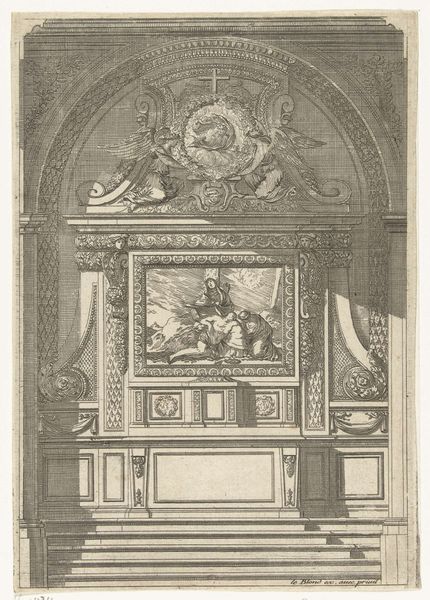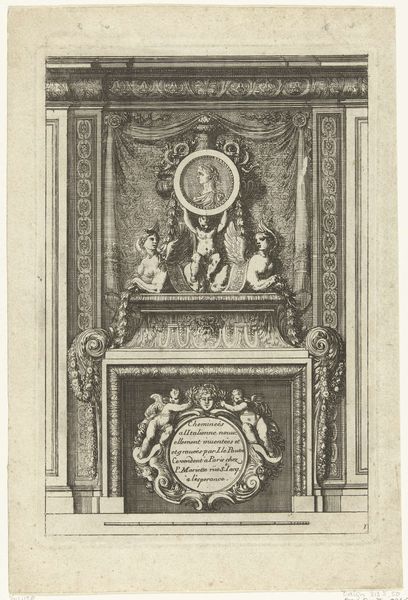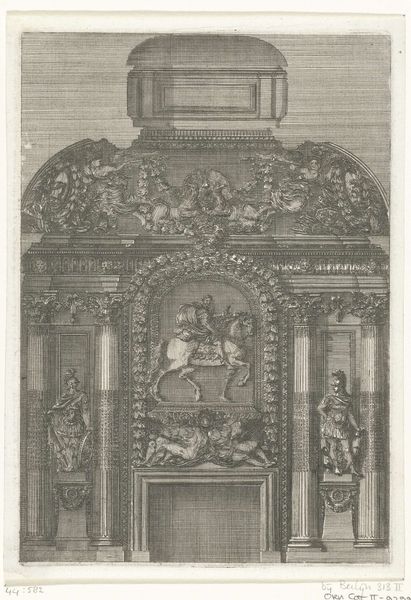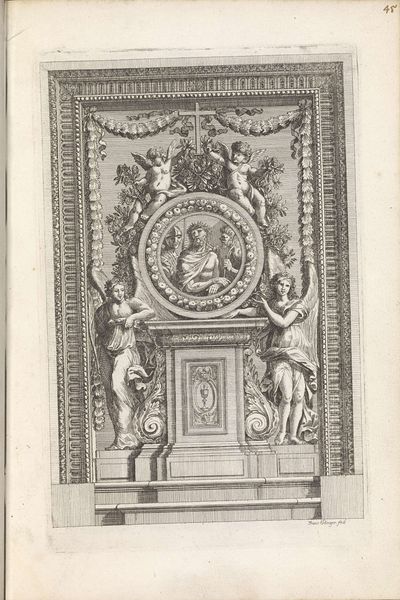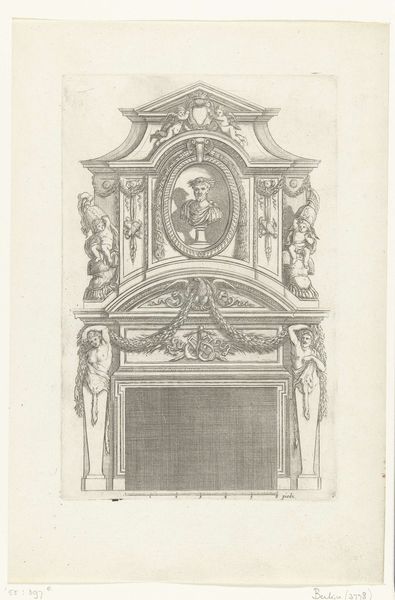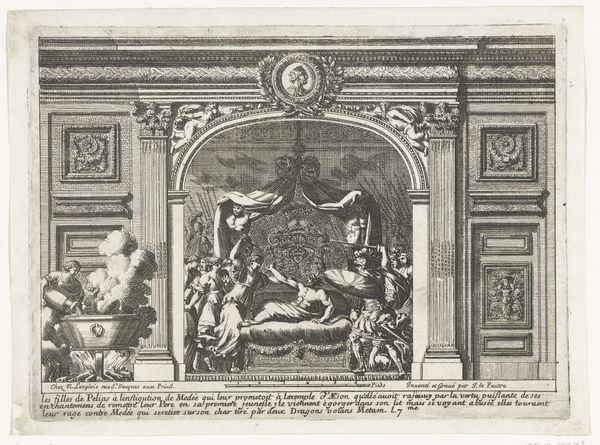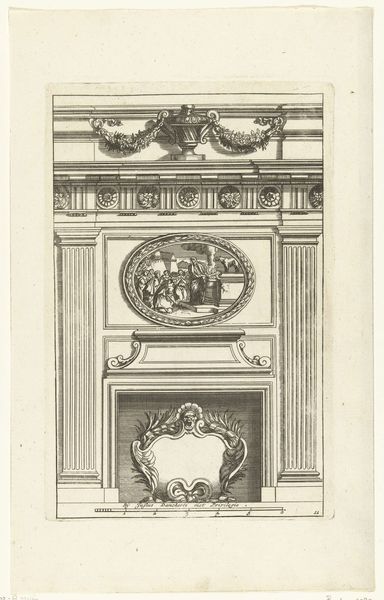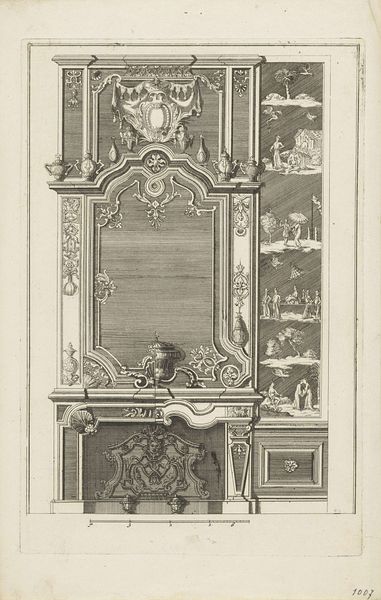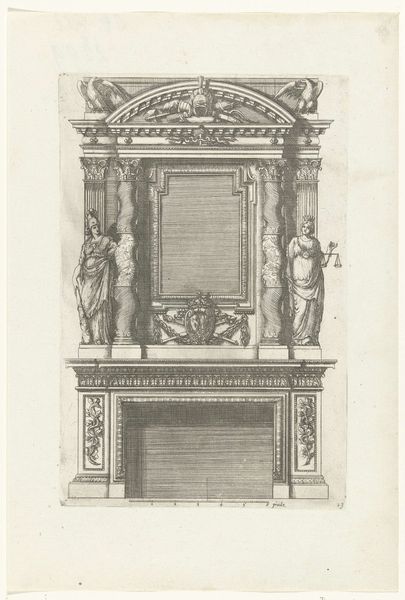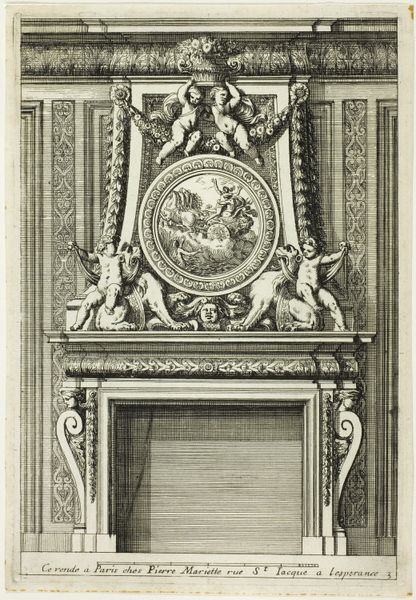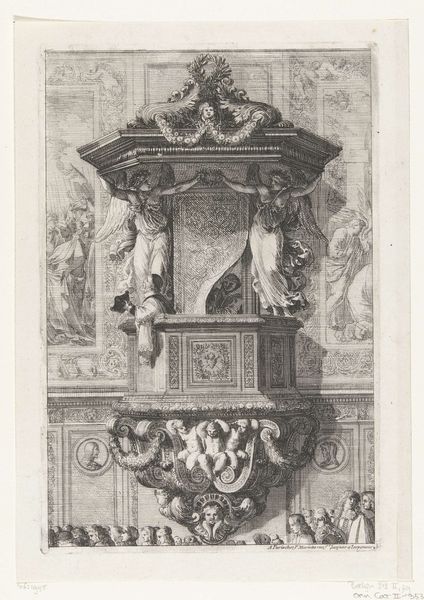
engraving, architecture
#
aged paper
#
toned paper
#
baroque
#
parchment
#
old engraving style
#
figuration
#
personal sketchbook
#
line
#
history-painting
#
decorative-art
#
engraving
#
architecture
Dimensions: height 193 mm, width 135 mm
Copyright: Rijks Museum: Open Domain
Curator: Here we have Jean Le Pautre's "Schoorsteen met twee Overwinningsfiguren", an engraving dating back to around 1651. It's part of the Rijksmuseum's collection. Editor: My first impression is the incredibly ornate detail. The fine lines of the engraving lend a cool formality, and the use of hatching really emphasizes the texture of what appears to be a very lavish chimney piece. Curator: Indeed, Lepautre’s technique gives it an almost sculptural quality, doesn't it? I’m drawn to the process here, and considering the laborious and skillful work to transfer the artist’s design onto the plate, it hints at the broader artisanal practices and workshops of the time. Each delicate line speaks volumes about the production of such luxurious objects, both the physical structure it depicts and the print itself. Editor: And what an object it is! The figures flanking the vase positively radiate power, don't they? Consider the recurring motif of laurel wreaths; victory isn't merely symbolized but is structurally integral to the design itself. This visual vocabulary of triumph would have resonated deeply with the aristocratic patrons of the time, subtly reinforcing their sense of destiny and entitlement. Curator: Right, entitlement achieved through display, I’d wager. These were spaces meant to impress. This engraving acts as a template almost. We see this being replicated on site, each unique marble or brick showing the maker’s signature in the finish of a material. Editor: So, it's not just about celebrating military wins or conquests. Curator: Oh no. It speaks volumes about how material culture can be weaponized for class, power, and access, making these luxurious pieces exclusive to those who commissioned such works. Editor: Absolutely, the very architecture becomes a vessel for symbolic assertion. Analyzing this work helps us grasp the layers of meaning embedded in what might initially appear to be just decorative. Curator: I agree completely, seeing the work from this point means so much more about this decorative print, beyond pure visual appeal.
Comments
No comments
Be the first to comment and join the conversation on the ultimate creative platform.
